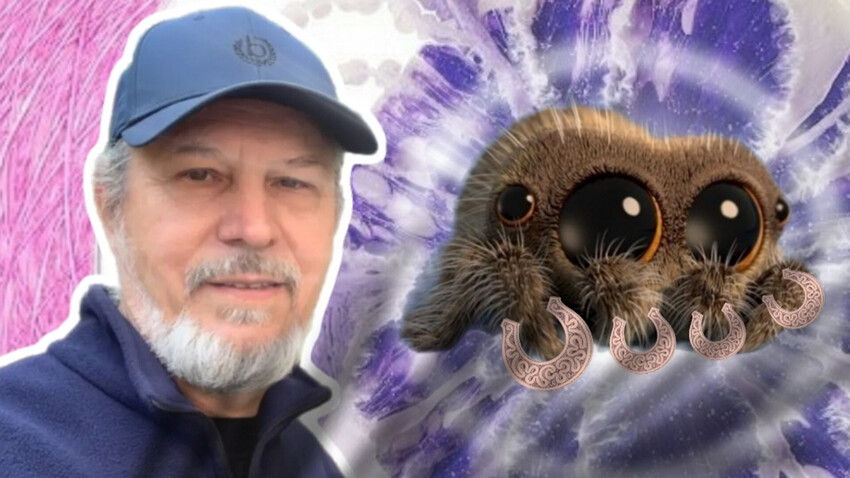
The phrase “To shoe a flea” (“подковать блоху”; “podkovat’ blokhu”) in the Russian language means to perform delicate, intricate work. It came from a short story by author Nikolai Leskov, written at the end of the 19th century. According to its plot, Tula’s master craftsman Lefty literally shoed a tiny steel flea that had been made by English craftsmen. As such, he demonstrated the technological superiority of Russian gunsmiths.
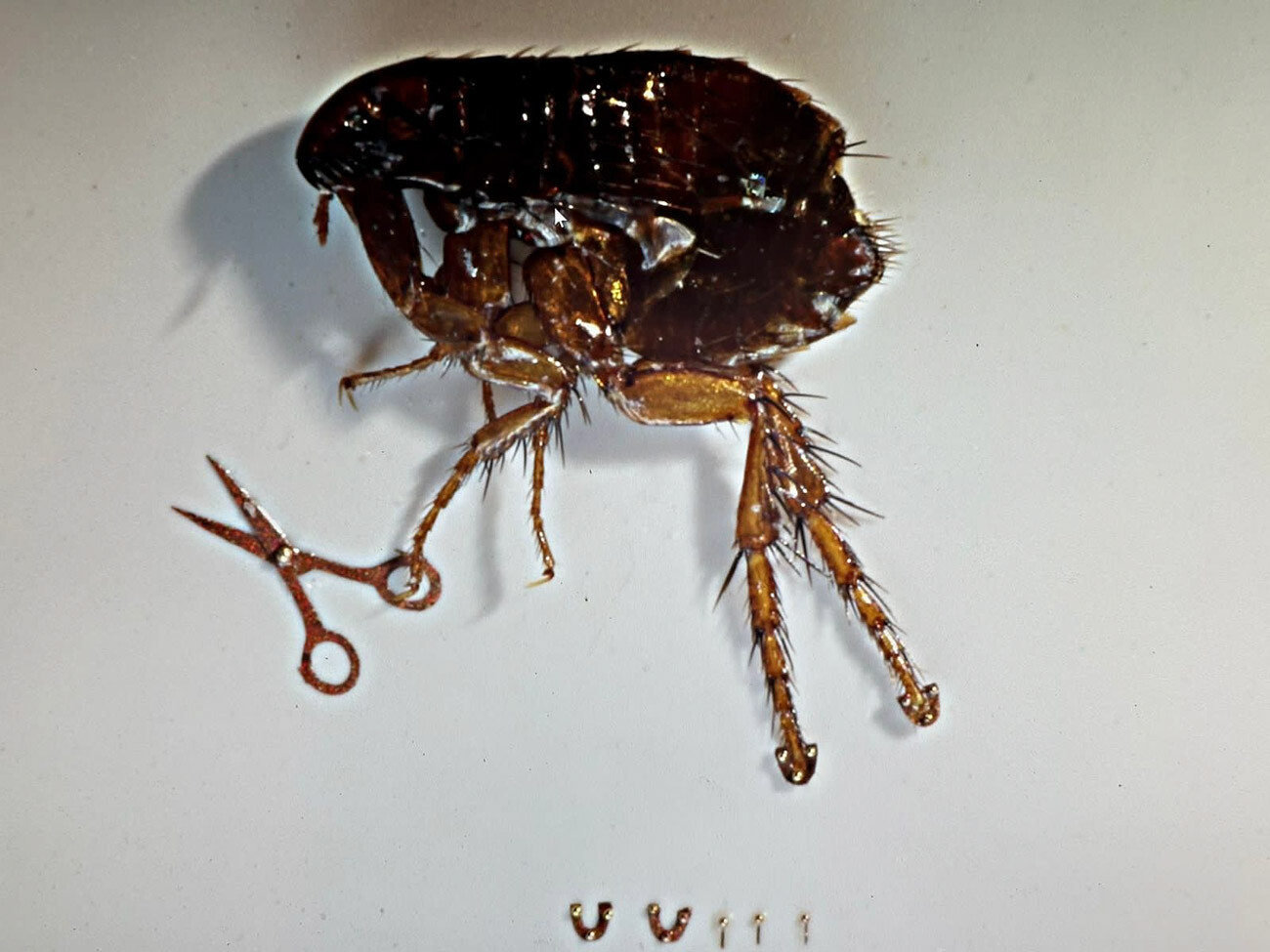
A shod flea. A real flea is horseshoed with gold horseshoes measuring 0.25mm x 0.2mm. Three holes are drilled with a 0.03mm diameter drill bit. Development of technology and manufacturing of this miniature lasted for 7.5 years
Press photoLeskov’s story is fiction, but modern Russia really does have a master craftsman that shoed a flea and created hundreds of other microminiatures. His name is Anatoly Konenko and he’s 69 years old.
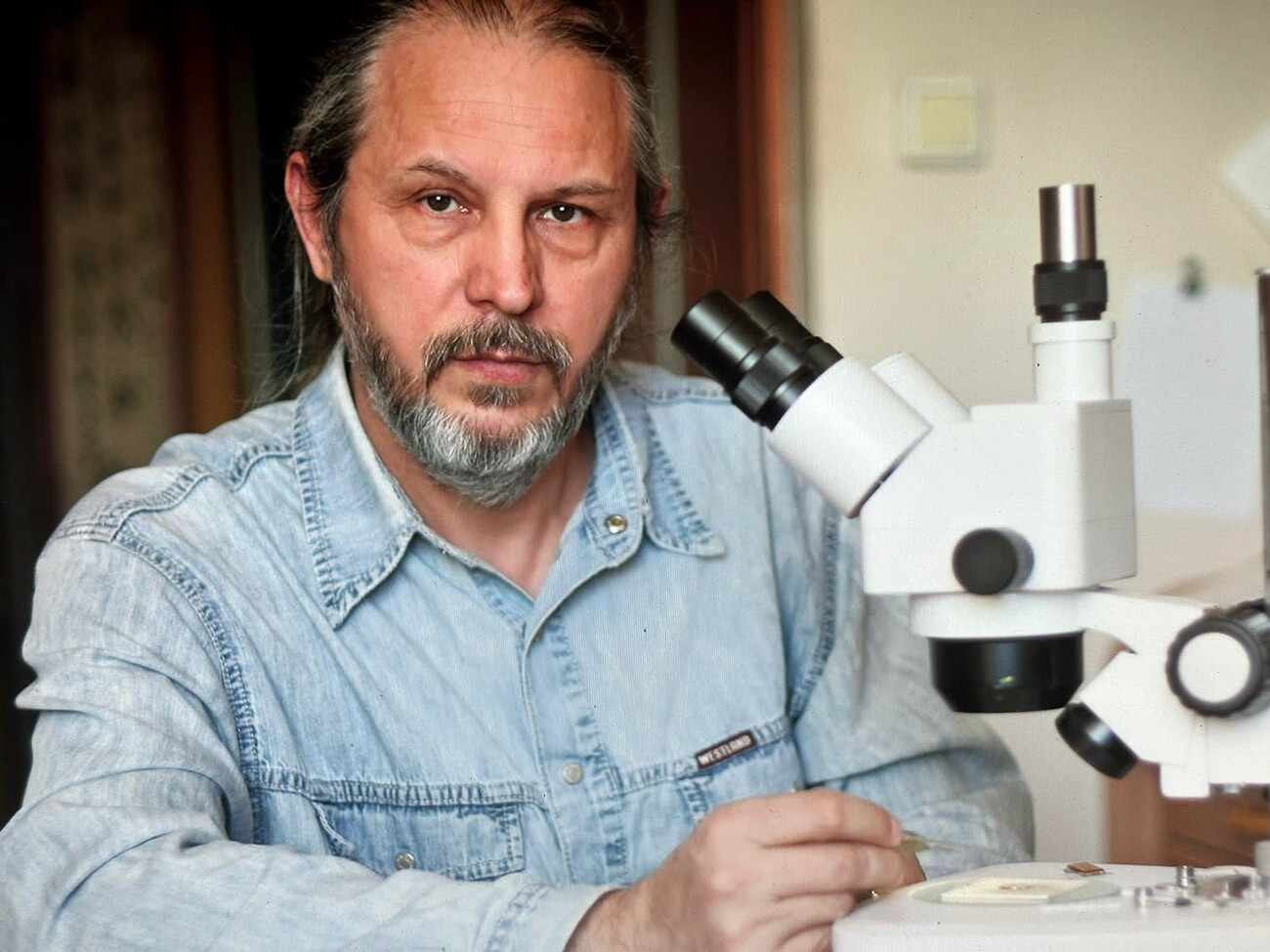
Anatoly Konenko
Press photoAmong his works are:
In 1981, a year before graduating from the Art and Graphic Faculty of Omsk State Pedagogical University, Anatoly asked himself: what is the tiniest portrait one can paint, such that the facial features of the man painted would be distinguishable?
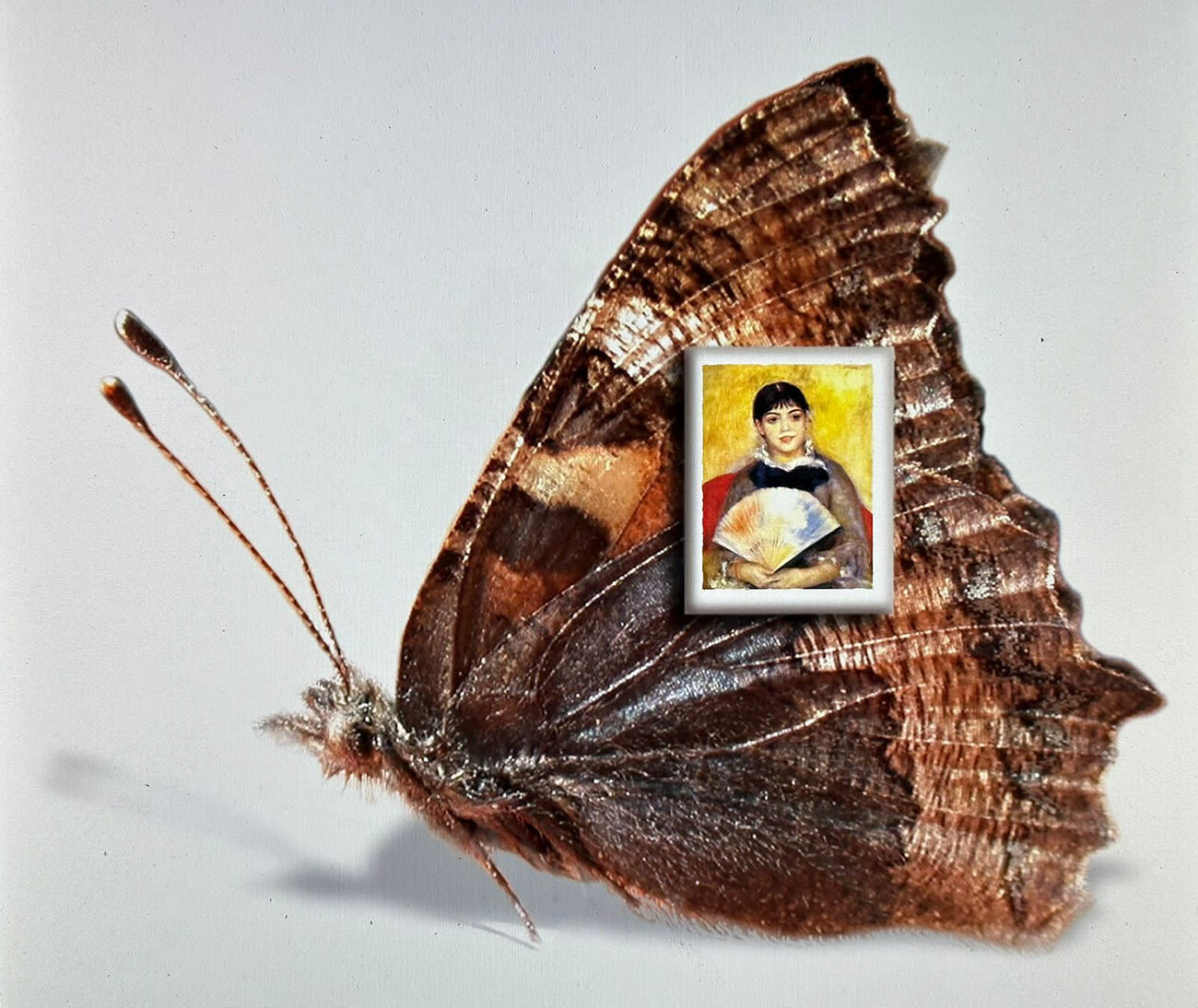
'Girl with Fan'. Microminiature from the painting by Pierre-Auguste Renoir. Watercolor on mammoth bone. Size 10.2x15.6 mm
Press photo“I’m an artist and I’m also an inventor by my second degree. So, the artist and the inventor unite in me! I’ve done a lot of things; in the end, I realized that when you paint on a really-really-really small scale – that’s where the unknown lurks for an artist,” Konenko explains.
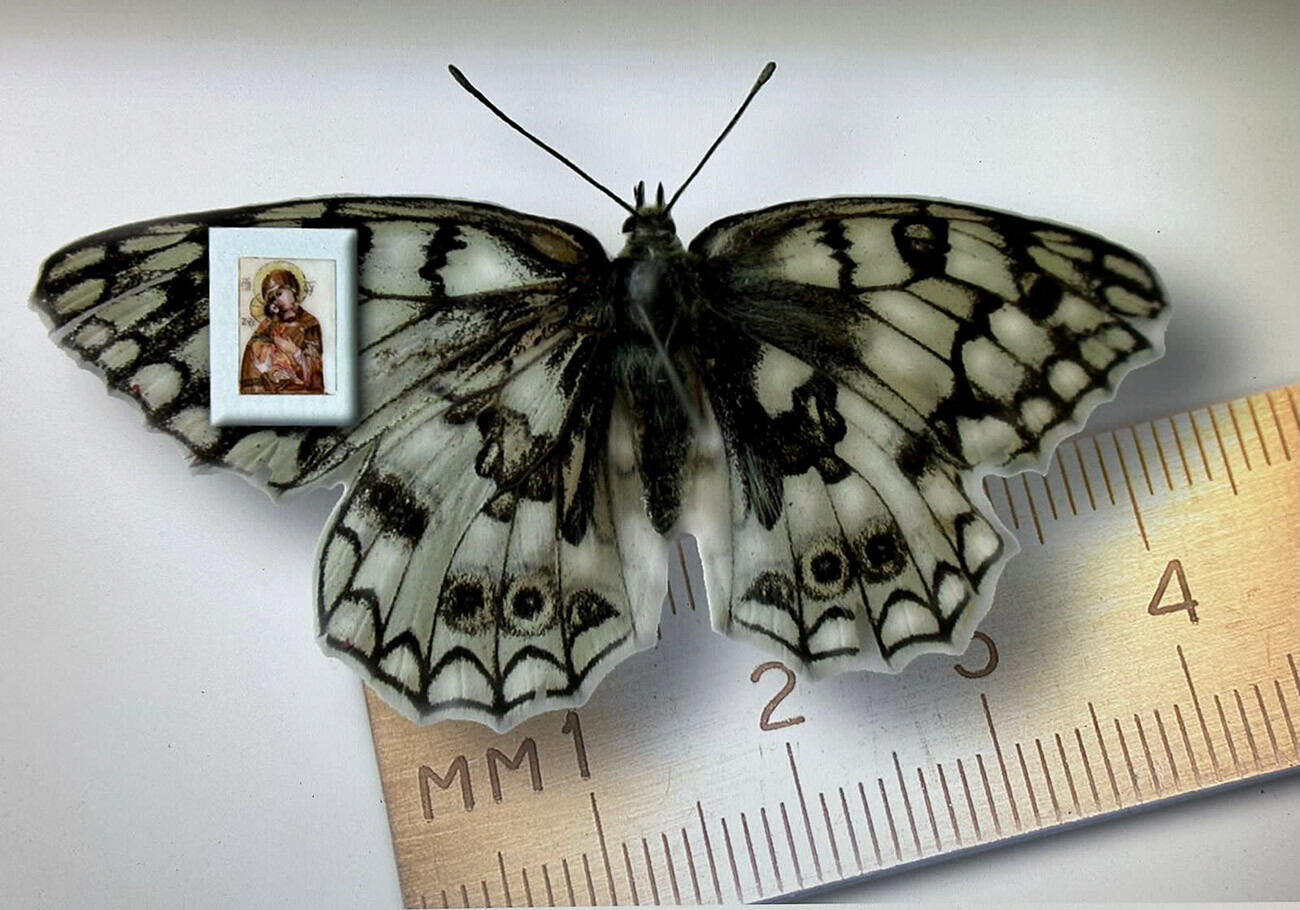
The icon Our Lady of Vladimir. Micro-miniature is made by watercolor on a plate of mammoth tusk. Size 5,0 x 7,0 mm
Press photoBy trial and error, he reduced the size of both the tools of his craft and the source materials. To bring everything to perfection, he required about 15 years, as the artist shares.
Today, the process of creating complex works requires about a month from Konenko. He created the mini-aquarium, which is listed by the World Records Academy as the smallest in the world, in three weeks.. It had no micro-details, but working with real roe and plant spores, microalgae and the capillary system of air supply required a special approach.

Aquarium
Press photo“The task was to have living fish there, the air was supplied in such a way so small bubbles of air would be released, which is really hard to do in water,” Anatoly explains.
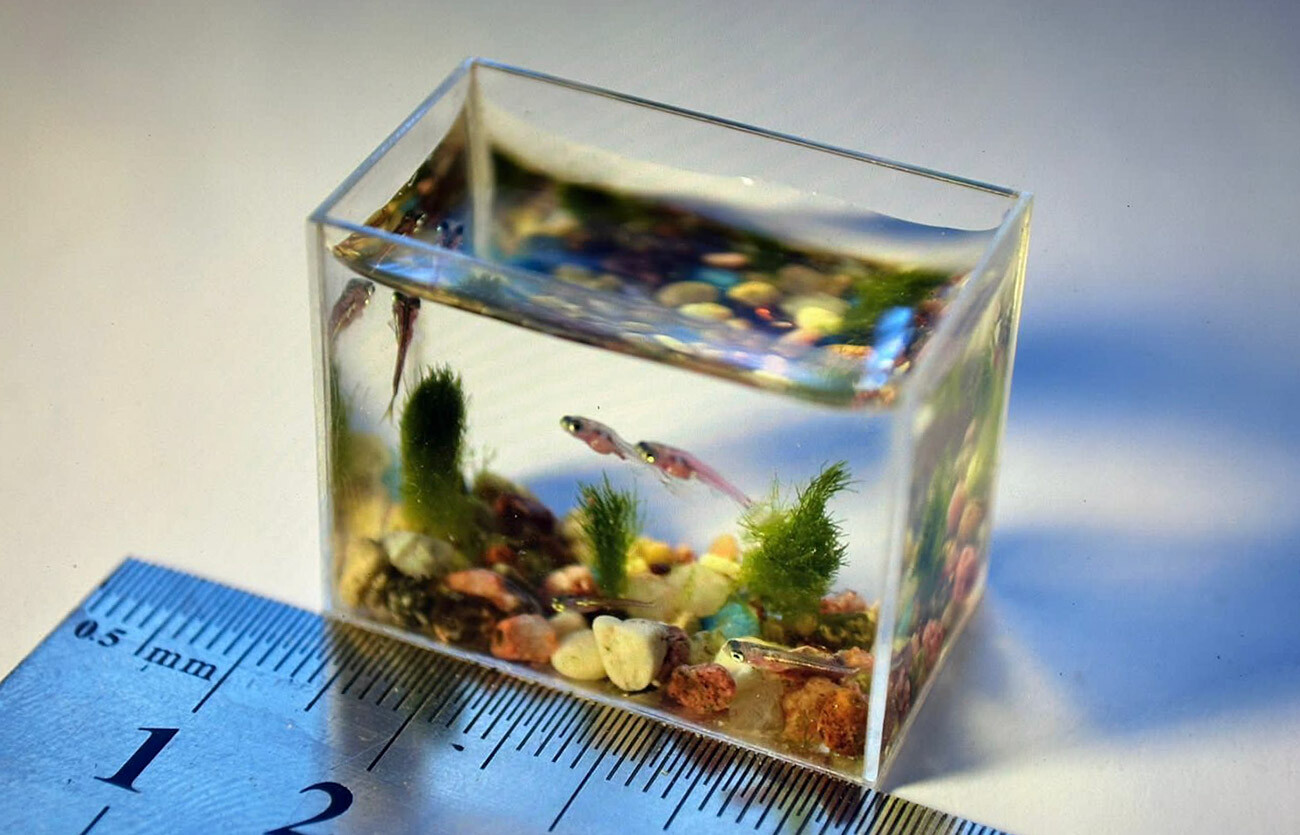
Aquarium
Press photoAccording to him, micro brushes and chisels move in his hands to his heartbeat – as blood vessels pulsate on his fingertips. Hence, for precise work, one has to catch the moments between heartbeats. “You need to catch the rhythm, then the work will go smoothly. Sometimes, I even put on some music for meditation,” the artist says.
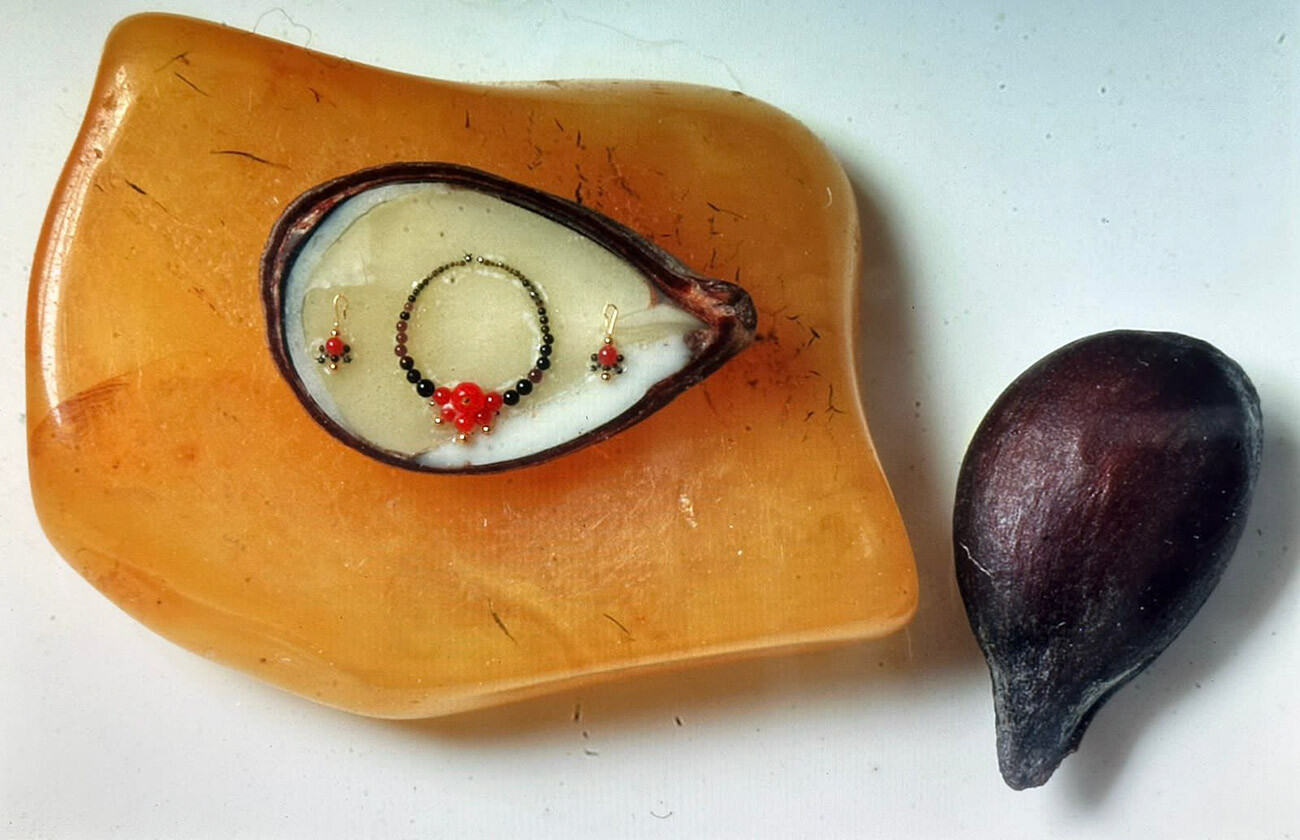
Necklace and earrings on an apple seed. Glass. Gold. 2.7 mm
Press photoThe author places special meanings into his microminiatures dedicated to Omsk, where he’s living right now. For Omsk’s 300-year anniversary, he placed a hair in the middle of the letter ‘O’ from the word ‘Omsk’, laid with grains of sand on a white ceramic plate. The artist collected the sand for it at the confluence of the local Irtysh and Om rivers. Moreover, every letter in the word is made of grains of sand, the amount of which corresponds to its position in the alphabet.

Grasshopper with violin. The violin is 12 mm long
Press photo“This work is in our museum and a lot of people come and read it and think to themselves: what is it made for? What purpose does it serve? Why is it made like that and not in any other way? - well, to draw attention,” Anatoly says.
Konenko’s works also draw attention overseas. In different times, his exhibitions were held in the U.S., Germany, France, Czechia, Spain, Japan and China.

Camel caravan in the eye of a needle. Figurines of camels and herders are made of gold. Height 0.25 mm
Press photo“People treat it the same way, with great interest. It seems they want to feel the magic and see how it is possible to work at such a tiny scale. They don’t understand how you can make a book the size of one millimeter. They can’t wrap their heads around it and yet their eyes see it,” Konenko says.
There’s a special category of fans of his creative works, to whom Konenko brings his creations personally. Three times a month, he visits places of detention.
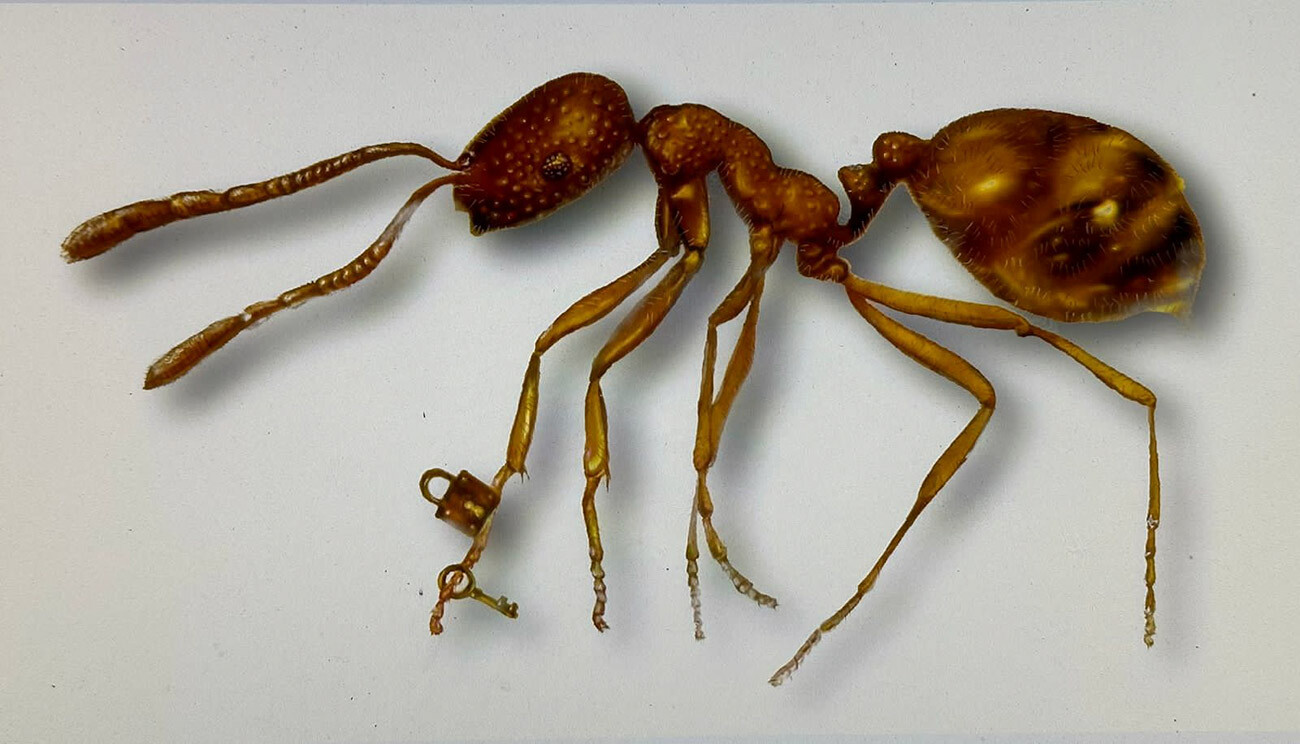
The lock and key on the ant's leg. The ant's length is 2mm, the length of the key is 0.24mm
Press photo“There’s a lot of prison camps, I simply don’t have enough time to visit all of those I’ve been invited to. Convicts are an appreciative audience, they are always interested to see what is hard to find, even in museums. They’re happy that it is brought to them, shown and explained. Regular people can go to a museum. These people can’t. So I come to them,” Anatoly explains.
There are only 11 artists known in the world who are able to create works of that size. Usually, these are miniaturists, who work in the post-Soviet space.

Konenko has created the world's smallest book. Nikolai Gogol's story "The Overcoat" measuring 30x32 millimeters. It is a full edition with hardcover and color illustrations.
Alexei Malgavko/SputnikThe price of such microminiatures as the aquarium, the shod flea, a caravan of camels, a grasshopper with a violin, reached 50,000 EUR. Although, currently, almost all the clients are from Russia. Konenko is mostly creating miniature books with illustrations for sale. He’s also painting regular-sized works. His hall in the Omsk Library named after Alexander Pushkin hosts watercolor studies with views of Omsk.
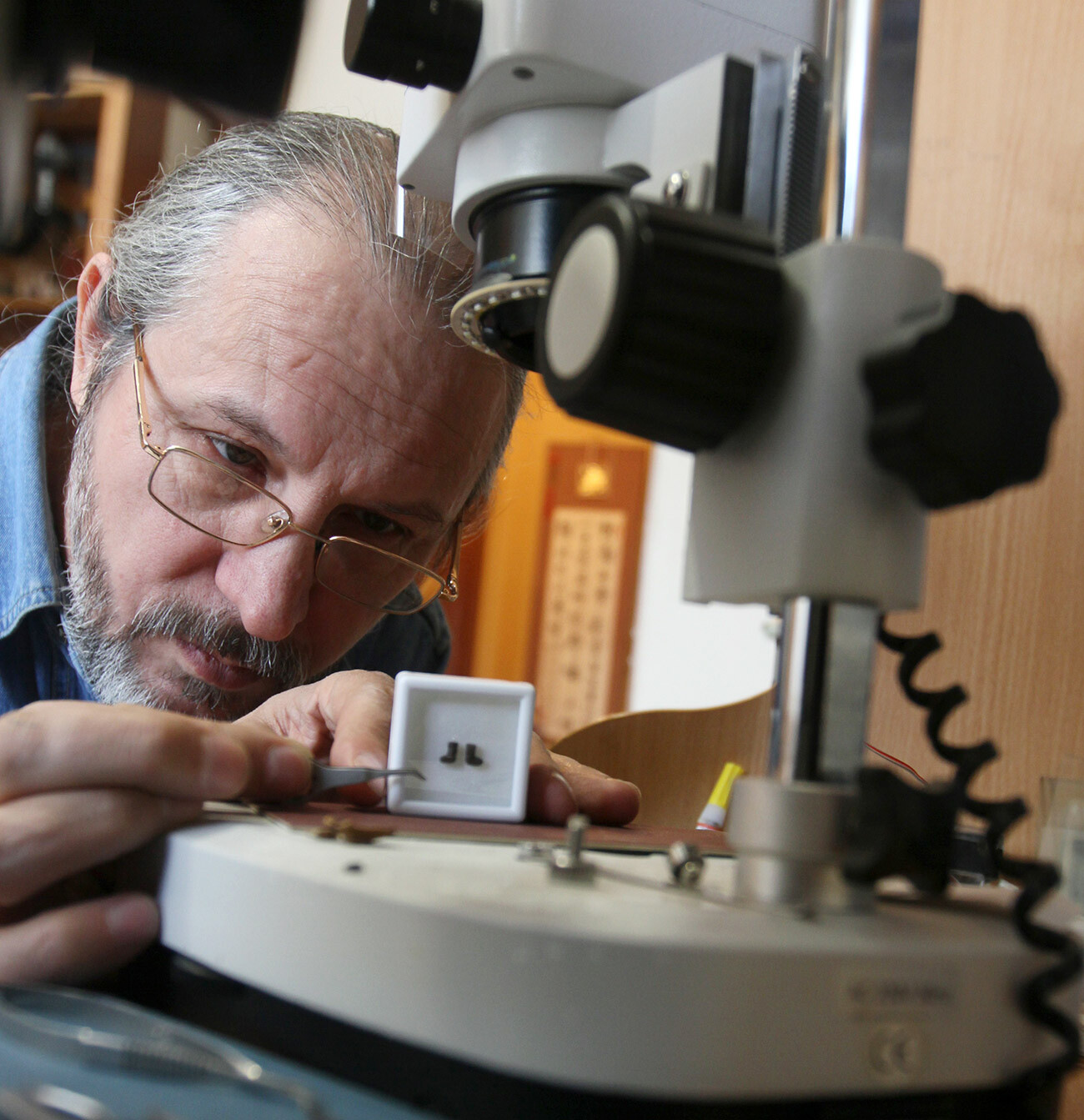
Omsk micro-miniaturist Anatoly Konenko and his valenki. Size 3 mm
Alexei Malgavko/SputnikKonenko explains the interest and high price of his works simply: “At all times, what was made by the human hand, was in demand and was priced pretty steeply. Master craftsmen from all around the world continue to create limited edition items with traditional techniques and they cost a lot, because you can’t create something like that in a streamlined fashion, at a factory. They both preserve the traditions and create these items, maintaining the level of demand. Their work will always be valued.”
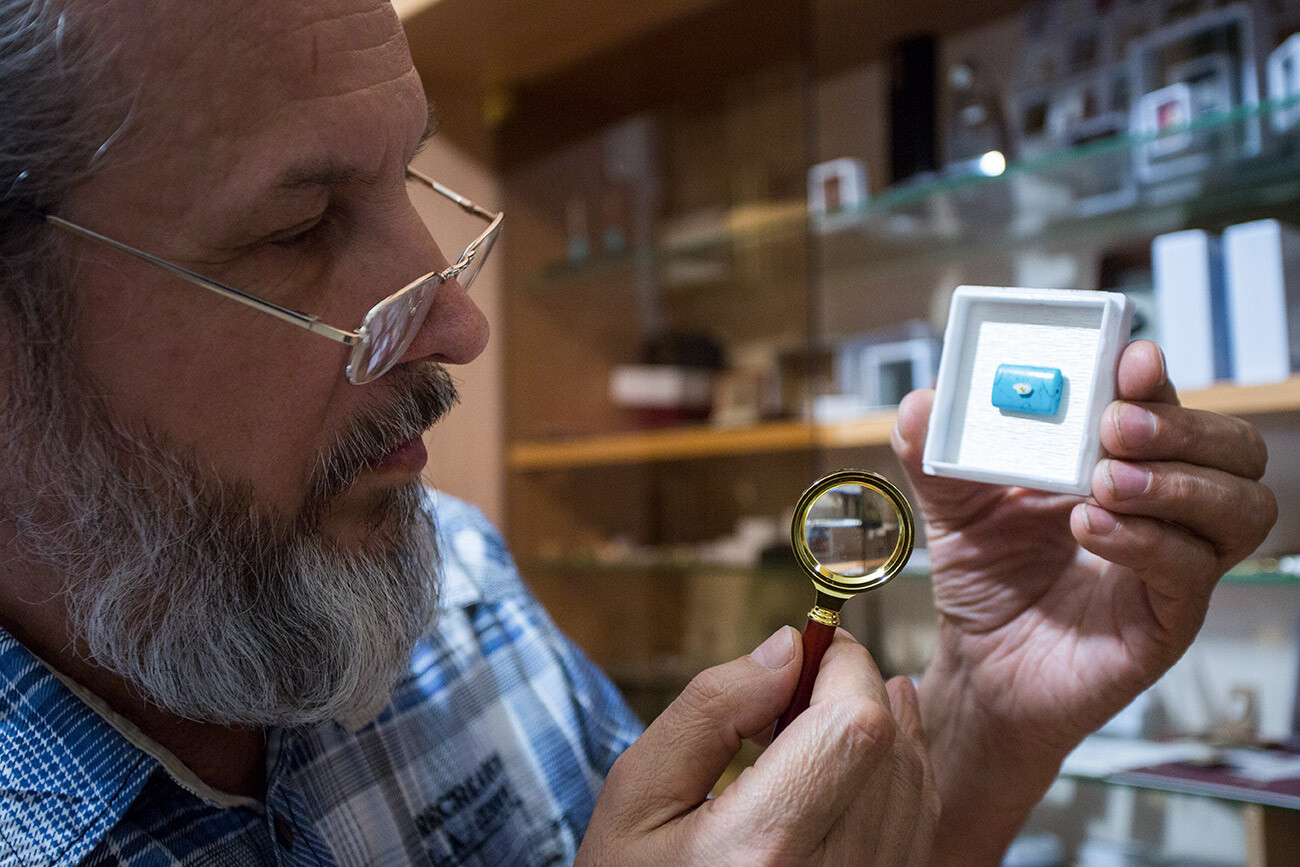
A tiny Christmas tree decoration
Dmitry Feoktistov/TASSDear readers,
Our website and social media accounts are under threat of being restricted or banned, due to the current circumstances. So, to keep up with our latest content, simply do the following:
If using any of Russia Beyond's content, partly or in full, always provide an active hyperlink to the original material.
Subscribe
to our newsletter!
Get the week's best stories straight to your inbox